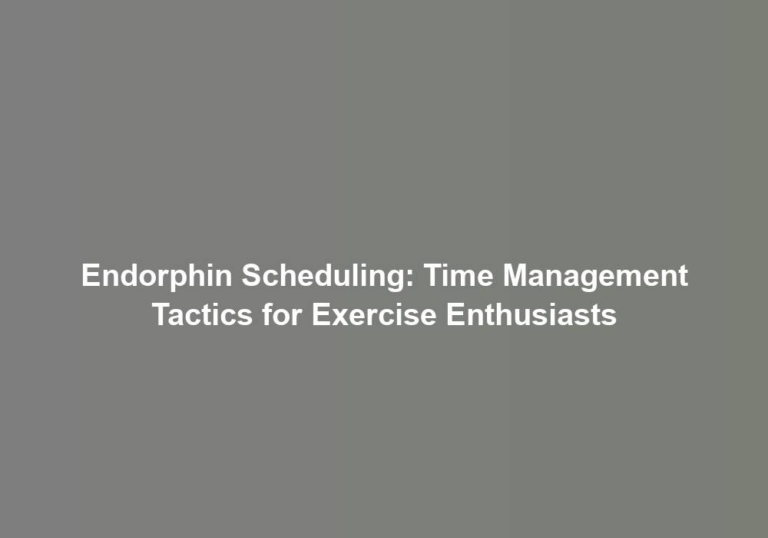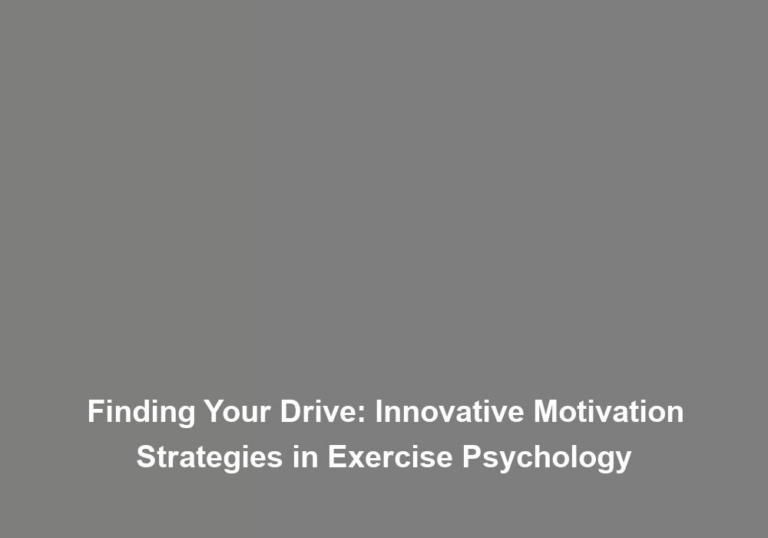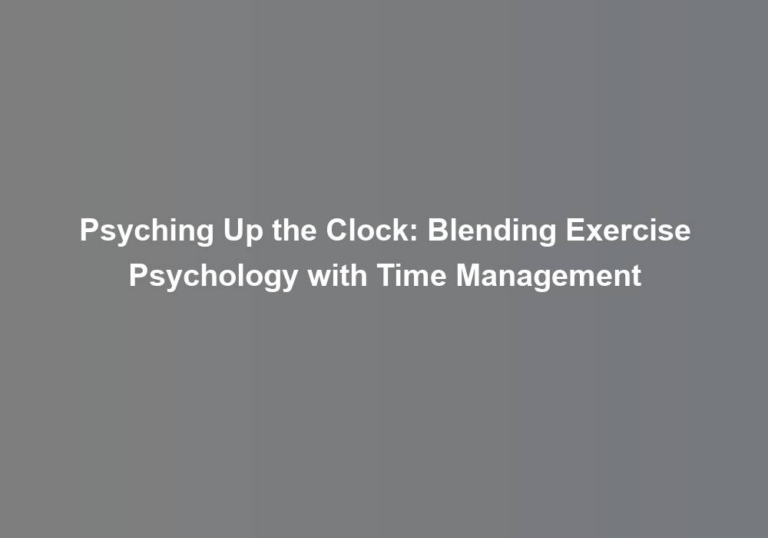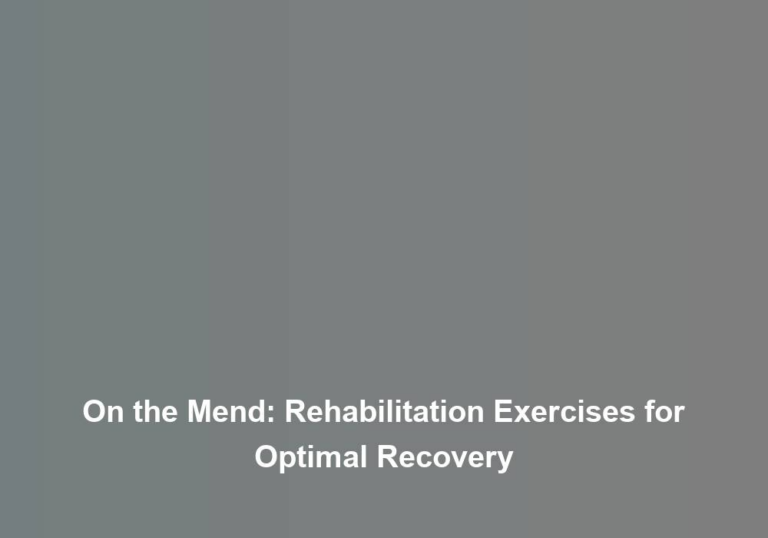Mind-Muscle Methodology: Time Management in Exercise Psychology
Imagine your mind and muscles working together like a well-oiled machine, seamlessly coordinating every movement and thought. The concept of Mind-Muscle Methodology is a powerful tool in exercise psychology, offering a unique approach to time management that goes beyond simply scheduling workouts. As you delve into the intricacies of this methodology, youG??ll uncover the potential to maximize your exercise efficiency, consistency, and overall results. So, how can this approach revolutionize your fitness journey and elevate your performance to new heights?
Understanding Mind-Muscle Connection
To enhance your workout effectiveness, focus on actively engaging and contracting the specific muscle groups you are targeting, a technique known as the mind-muscle connection. This method involves the use of neural pathways to establish a strong connection between your mind and the muscles you are working on. By consciously engaging your muscles during exercise, you can enhance muscle activation and maximize the benefits of your workout.
Deep breathing plays a crucial role in facilitating the mind-muscle connection. When you take deep breaths, you oxygenate your muscles, making them more responsive to the neural signals sent by your brain. This not only enhances your focus but also improves the efficiency of muscle contraction. As you inhale and exhale deeply, visualize the specific muscle group you are targeting, and as you contract, focus on the sensation in that muscle. This mental focus can significantly improve the quality of your workout.
Prioritizing Workouts for Efficiency
Prioritizing your workouts for efficiency requires careful consideration of your fitness goals, time constraints, and the most effective exercises for achieving optimal results. Efficient scheduling and workout prioritization can significantly impact the effectiveness of your exercise routine. To help you make informed decisions, the following table outlines a sample workout prioritization strategy based on different fitness goals and time availability.
| Fitness Goal | Time Availability | Prioritized Workouts |
|---|---|---|
| Weight Loss | Limited | High-intensity interval training (HIIT), compound exercises, circuit training |
| Muscle Gain | Moderate | Strength training, isolation exercises, adequate rest between sets |
| Overall Fitness | Abundant | Combination of cardio and strength training, flexibility exercises, variety in workouts |
| Stress Reduction | Varied | Yoga, Pilates, meditation, outdoor activities |
By aligning your fitness goal with the time you have available, you can optimize your workouts for maximum efficiency. For example, if your goal is weight loss and you have limited time, prioritizing HIIT, compound exercises, and circuit training can help you burn more calories in a shorter duration. On the other hand, if you aim to build muscle and have moderate time availability, focusing on strength training and isolation exercises with adequate rest between sets can promote muscle growth effectively.
Understanding the importance of prioritizing workouts for efficiency empowers you to make the most of your exercise sessions. By strategically scheduling and prioritizing workouts based on your individual needs, you can achieve optimal results while efficiently managing your time.
Enhancing Consistency and Motivation
Enhancing consistency and motivation in your exercise routine can be achieved through setting specific, achievable goals and creating a structured schedule to track your progress. Consistency is key to seeing results from your workouts. By setting specific, measurable, achievable, relevant, and time-bound (SMART) goals, you can enhance your accountability and motivation. When you have clear goals, you are more likely to stay consistent with your exercise routine.
To enhance consistency, it is important to create a structured schedule that includes dedicated time for exercise. This schedule serves as a visual reminder of your commitment to your fitness goals and helps you stay on track. Additionally, tracking your progress allows you to see how far youG??ve come, which can be a powerful motivator.
Goal setting is a powerful tool for enhancing motivation. When setting goals, consider both short-term and long-term objectives. Short-term goals provide a sense of achievement and help maintain motivation, while long-term goals keep you focused on the bigger picture. Celebrating the achievement of short-term goals can boost morale and reinforce your commitment to your exercise routine.
Optimizing Mental and Physical Resources
Creating an optimal balance between mental and physical resources is essential for maximizing the effectiveness of your exercise routine. When it comes to optimizing mental and physical resources, itG??s crucial to understand the interplay between mental focus and physical endurance. Mental focus refers to your ability to concentrate and direct your attention during exercise, while physical endurance is your bodyG??s capacity to withstand fatigue and sustain effort over time.
To optimize your mental focus, consider incorporating mindfulness techniques into your exercise routine. Mindfulness can help you stay present and attentive during your workouts, allowing you to fully engage with each movement and maximize your performance. Additionally, setting clear and achievable goals can enhance your mental focus by providing a sense of purpose and direction.
As for physical endurance, itG??s important to gradually build your stamina through consistent training and proper recovery. Incorporating a variety of exercises that challenge different muscle groups can help prevent premature fatigue and improve overall endurance. Furthermore, paying attention to your nutrition and hydration is vital for sustaining physical energy levels during exercise.
Implementing Mind-Muscle Methodology
To optimize the effectiveness of your exercise routine, it is crucial to understand and implement the mind-muscle methodology, which emphasizes the connection between mental focus and muscle engagement during physical activity. Implementing the mind-muscle methodology involves several key steps:
-
Visualization: Before beginning your exercise, take a moment to visualize the specific muscles you will be engaging. Imagine them contracting and working with each repetition, enhancing the mind-muscle connection. This mental focus primes your body for the upcoming physical engagement.
-
Conscious Muscle Engagement: As you perform each exercise, focus on the targeted muscle group. Concentrate on feeling the muscle contract and extend with each movement. This deliberate attention enhances the quality of your movements, leading to more effective muscle engagement.
-
Mindful Breathing: Integrate mindful breathing techniques into your workout. Focus on inhaling deeply as you prepare for a movement and exhaling as you exert force. This mindful breathing not only oxygenates your muscles but also helps maintain mental focus throughout the exercise.
Conclusion
In conclusion, the mind-muscle methodology is a groundbreaking approach that revolutionizes time management in exercise psychology. By prioritizing workouts with precision, enhancing consistency and motivation, and optimizing mental and physical resources, this methodology takes efficiency to a whole new level. Implementing this approach will undoubtedly catapult your fitness journey to unprecedented heights, maximizing your potential and achieving unparalleled results. Embrace the mind-muscle connection and unlock the true power of your mind and body.







